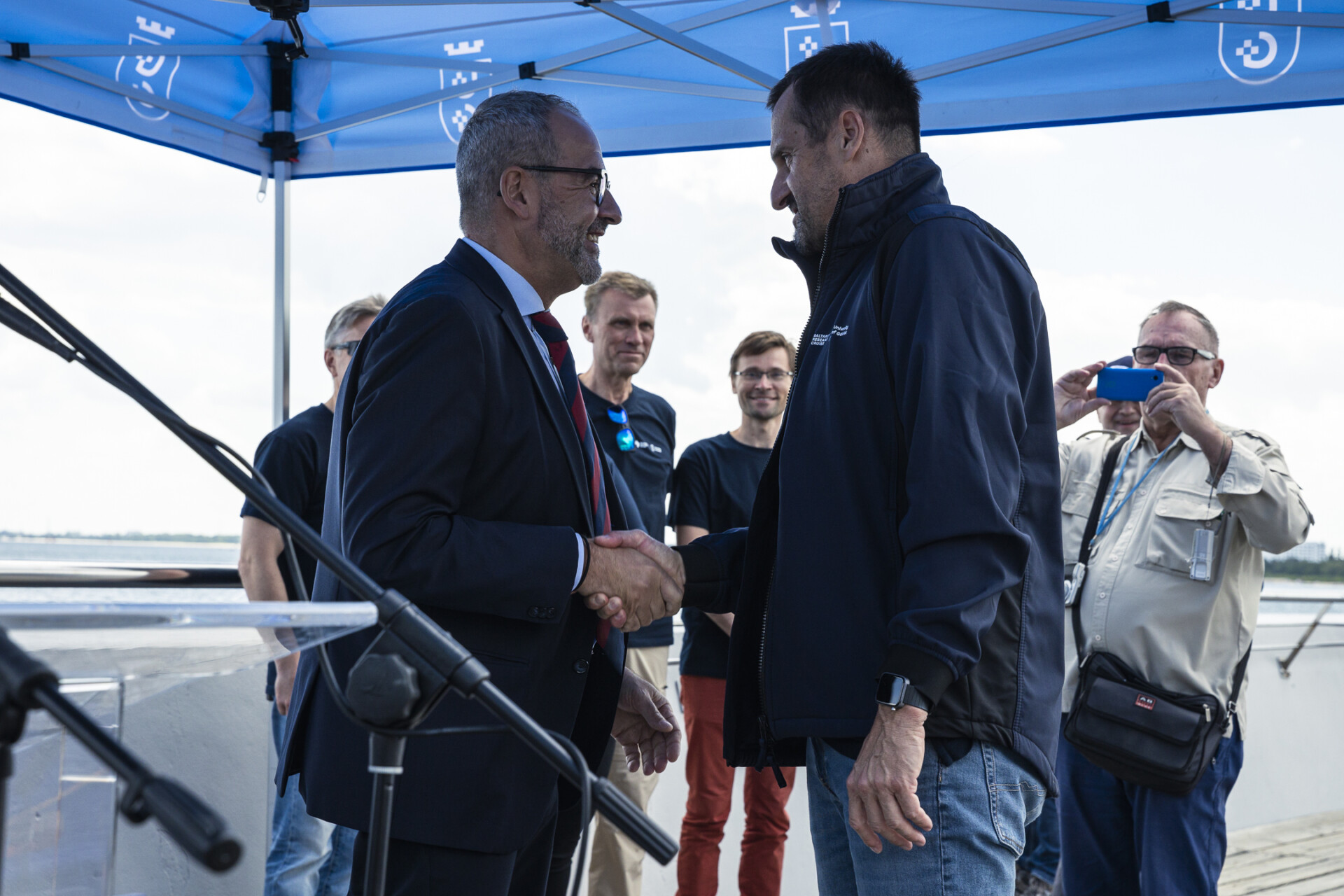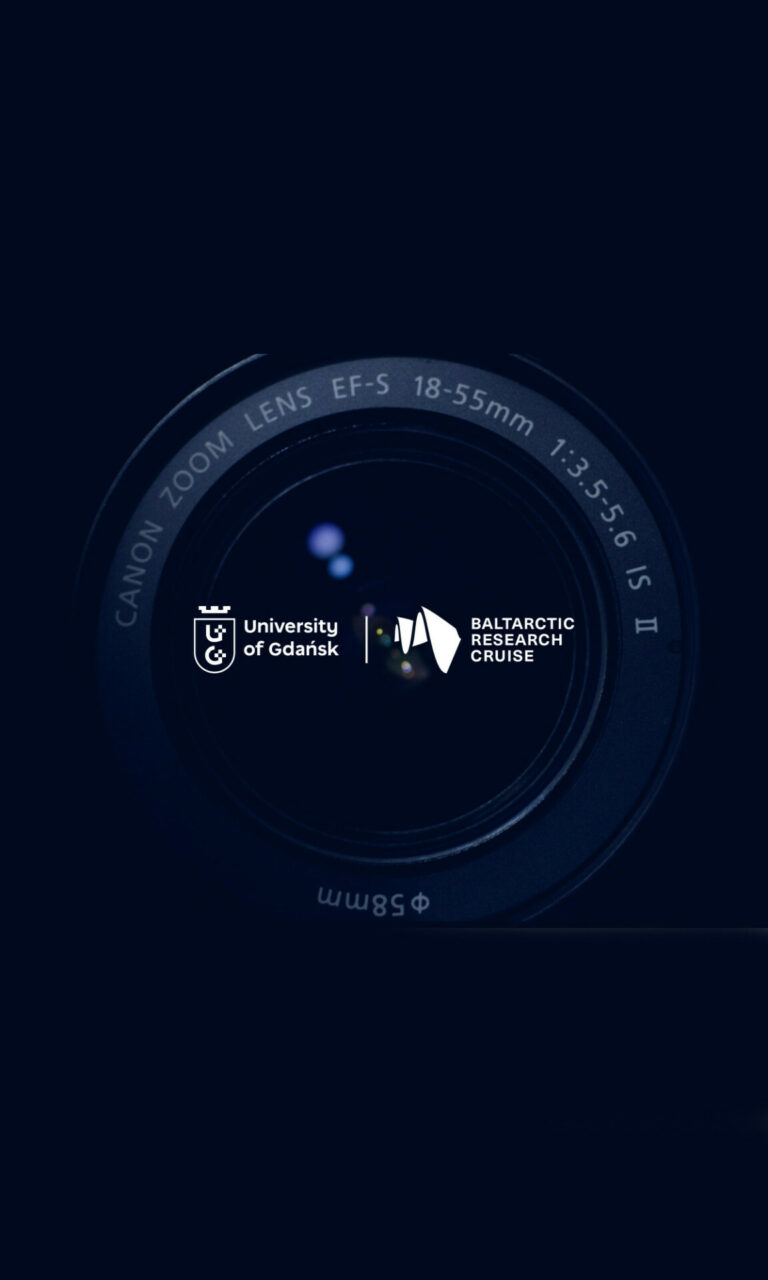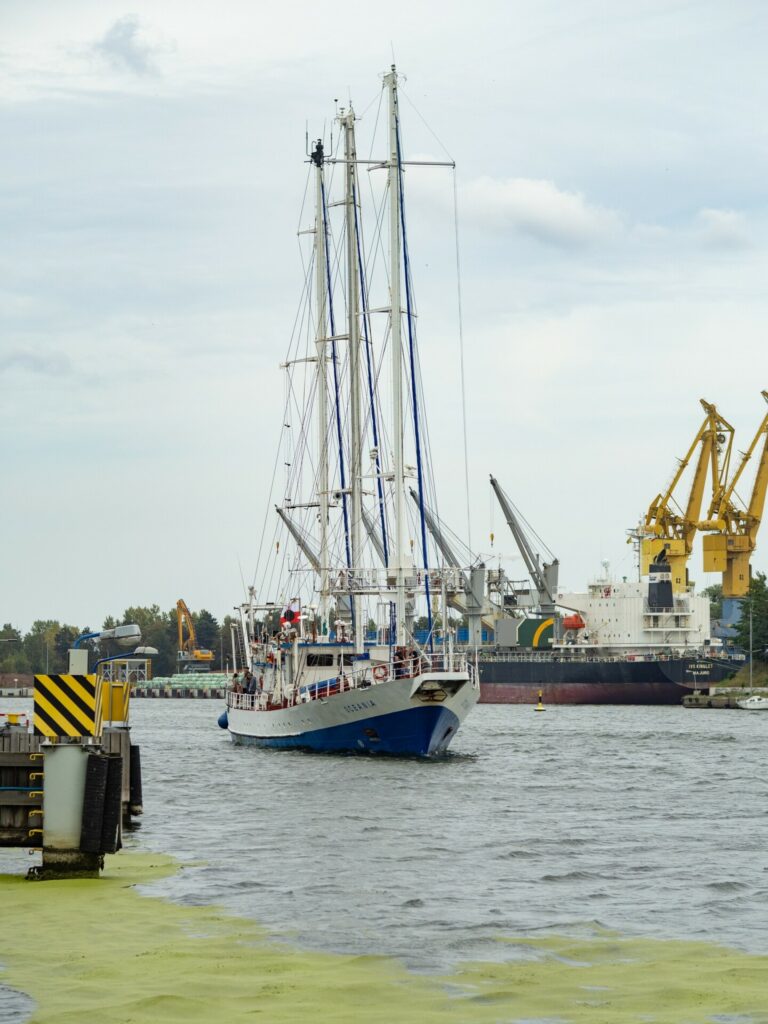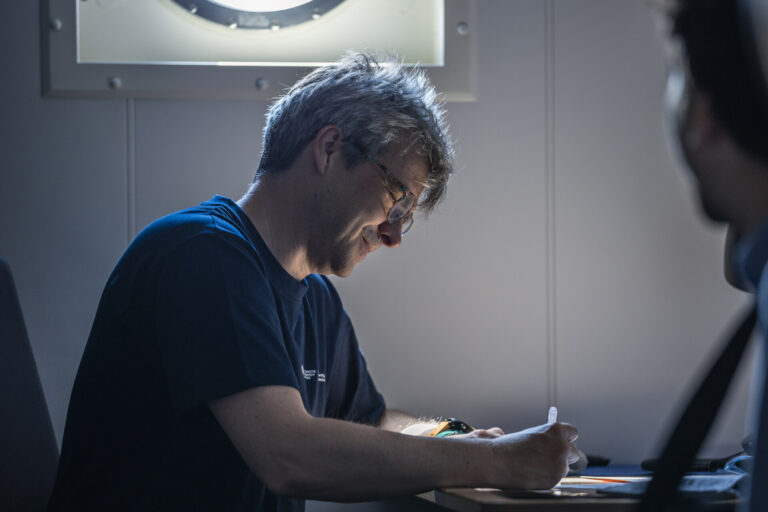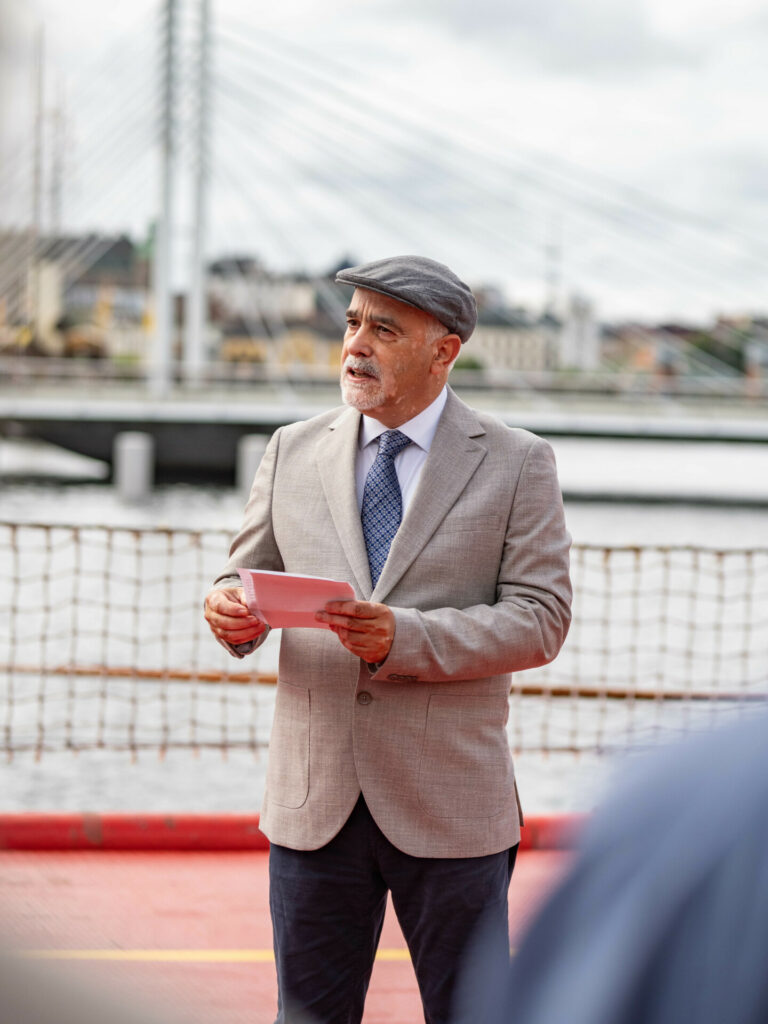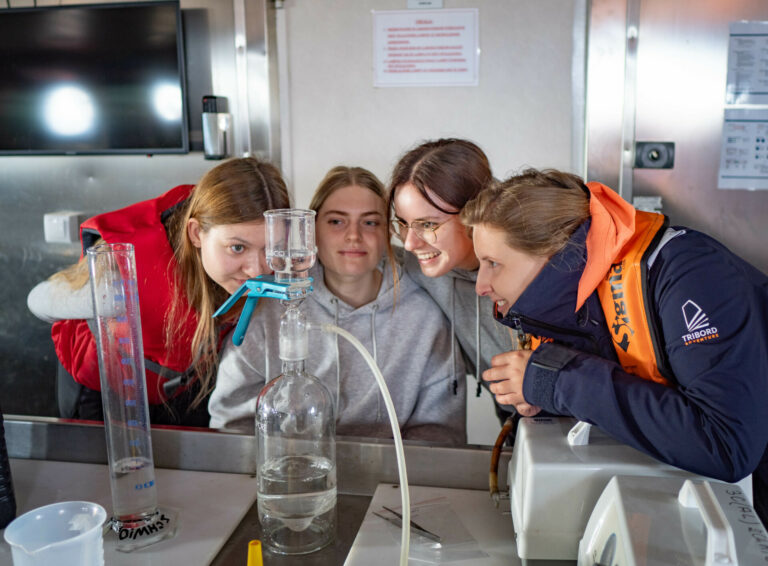R/v Oceanograf – a research vessel of the University of Gdansk – arrived at the pier in Sopot. The ceremony was attended by, among others, the Rector of the University of Gdańsk, Professor Piotr Stepnowski, the Rector of the University of Cadiz, Professor Casimiro Mantell Serrano, the General Coordinator of the SEA-EU alliance, Proferssor Fidel Echevarría, and the Deputy Mayor of the City of Sopot, Magdalena Cieślik. During the event, the citizens of Sopot had the opportunity to see the most modern research unit on the Baltic Sea up close.
The celebrations began at midday on the Sopot pier, where the r/v Oceanograf was moored to the accompaniment of maritime music. After the crew had disembarked from the ship, the captain Artur Kamiński, gave the Rector a report summarising the entire expedition. During the 33 days, the UG ship stopped at 16 research stations, one more than originally planned, sailed 2,900 nautical miles and visited five ports.
– This is a great moment, already the second in the history of our vessel, in which we welcome the r/v Oceanograf after its international peregrinations in waters all over Europe,’ said Professor Piotr Stepnowski. – This voyage was further proof that the University of Gdańsk has cooperation written into its DNA. (…) There is no better ambassador of Polish science than the r/v Oceanograf. Seneca said: “If someone does not know to which port he is sailing, no wind favours him”. We at the University of Gdansk know exactly where we are sailing to, and we will stick to this excellent direction.
The Rector also thanked the City of Sopot for the opportunity to moor “to the most beautiful pier in the world”, emphasising the embedding of the University of Gdansk in the whole of the Tri-City. He then welcomed the research team made of scientists from the SEA-EU alliance. He also thanked those involved in the organisation of the BaltArctic Research Cruise: the two captains, Artur Kamiński, M.Sc. and Andrzej Wawrzyniak, M.Sc., the scientific team leader, Professor Agata Weydmann-Zwolicka., Professor UG, and the Vice-Rector for International Cooperation, Professor Anna Jurkowska-Zeidler who coordinated the entire endeavour.
The UG Rector’s speech was followed by a speech by the Deputy Mayor of the City of Sopot, Magdalena Cieślik. She congratulated the entire Oceanographer’s team on what they had accomplished, namely the realisation of their research objectives. – ‘I am glad that you have returned safely to us. Welcome to Sopot!’
– Our goal was to determine the spread of the Baltic waters all the way to the Arctic areas – and with them the contaminants, including toxic and hazardous substances. We also continued research related to air pollution, as well as to the thinnest layer of surface water: the microlayer,’ summarised the project from the scientific side by researcher and cruise participant Dr Anita Lewandowska, Professor UG. – We still have months ahead of us in the laboratory to process data and write scientific publications – before we know the first scientific results of this cruise. We hope not only to continue this project, but also the many sub-projects that have already started to happen. We look forward to further SEA-EU-related activities – and to the next cruise – and to continuing our research.
The SEA-EU General Coordinator, Professor Fidel Echevarría, thanked the UG authorities for the opportunity to carry out part of the cruise – from Malmö to Sopot – on the University’s ship, and congratulated the University of Gdansk on having such an outstanding research vessel. He recalled that this was already the r/v Oceanograf’s second SEA-EU mission, during which the ship had become a ‘floating university’. He stressed that the voyage provided an opportunity to visit partner universities in SEA-EU. – Such undertakings become a symbol of what we want to build within SEA-EU. – In his speech, in addition to the scientists, he acknowledged the efforts of the crew and the ship’s technicians, as well as the work of Marcel Jakubowski, who was responsible for communication regarding the voyage. – The ocean has no boundaries. This ship will continue on its course, responding to new challenges, with new people on board, with new hopes: just as our SEA-EU alliance – I am convinced – will achieve the goals we set ourselves on day one.
After the official part of the event, the UG ship opened to the citizens of Sopot, who could see how research is conducted on the most modern research vessel in the Baltic Sea.
R/v Oceanograf is a multi-purpose vessel with a double-hull catamaran-type construction, designed to conduct interdisciplinary analyses of the state of the Baltic Sea environment. The vessel houses specialised laboratories for biological, chemical, physical and geological research. The vessel can take 20 people on board, is capable of sailing at a maximum speed of 12 knots and has a range of 2,500 nautical miles.
After the ceremony, the r/v Oceanograf left the Sopot pier for its permanent mooring in Gdynia.
